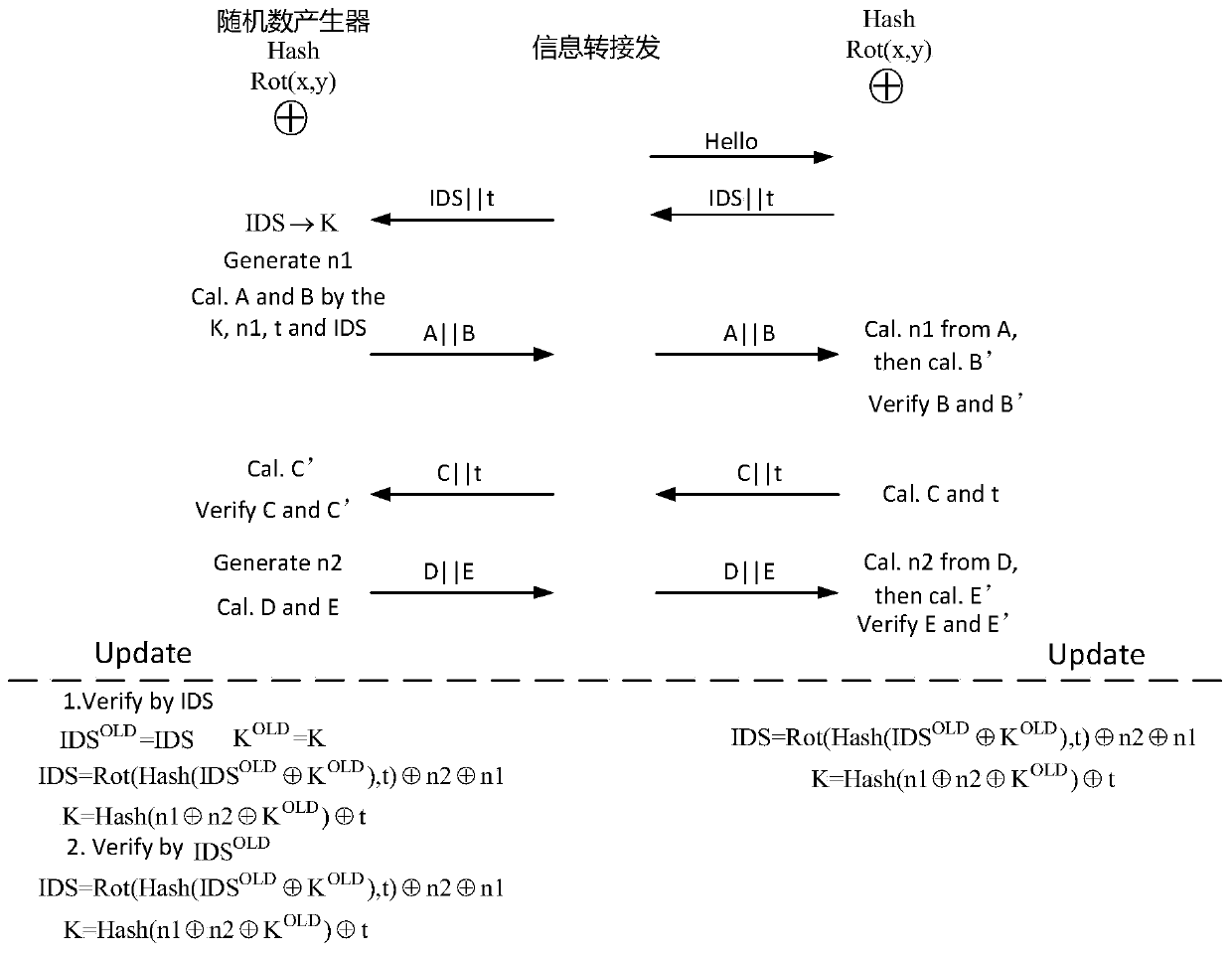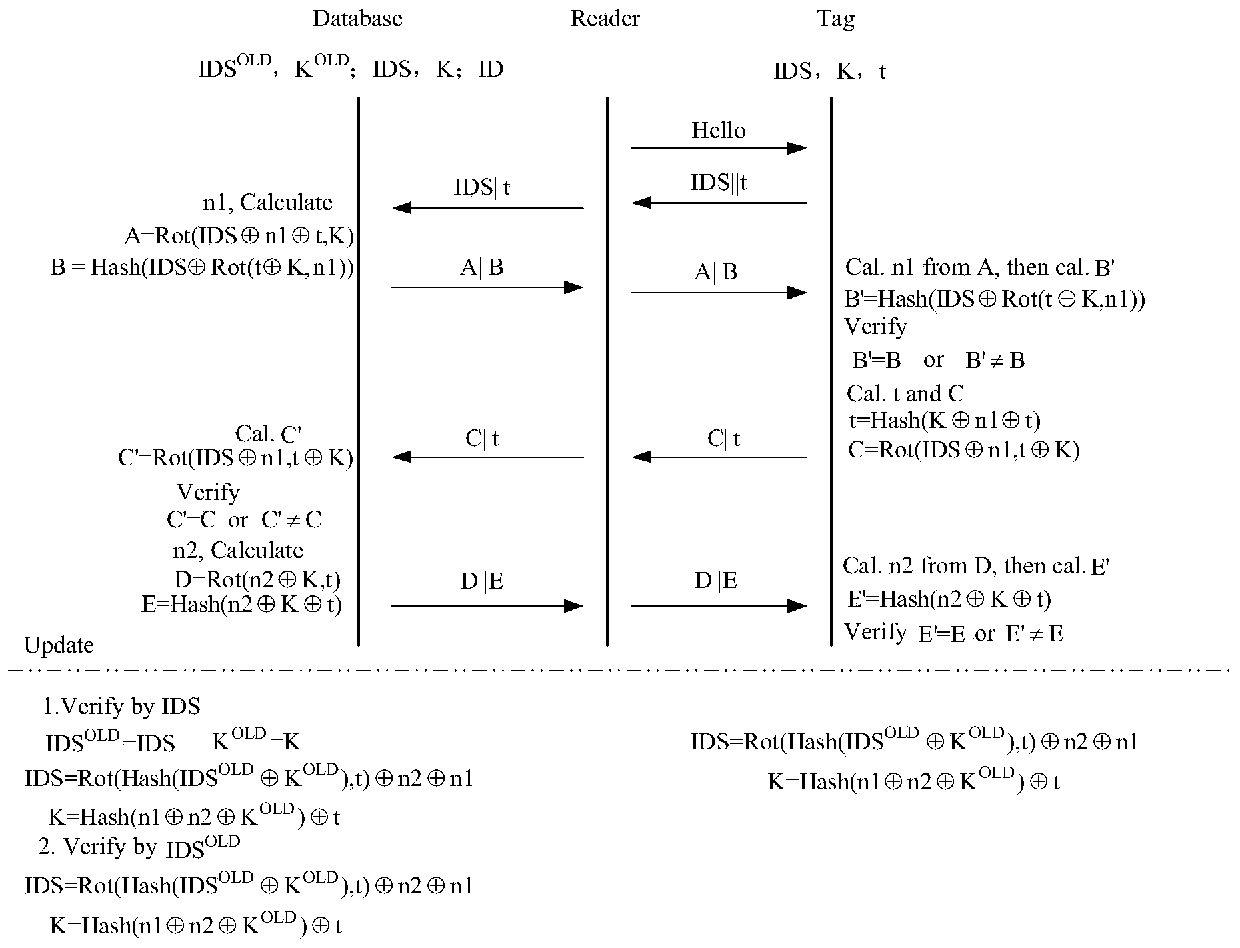A Lightweight RFID Bidirectional Authentication Method Based on Time Factor Anti-Desynchronization
A time factor, two-way authentication technology, applied in the field of RFID communication security, can solve problems such as desynchronization attacks, and achieve the effects of fewer interaction rounds, low key length, and low tag search complexity
- Summary
- Abstract
- Description
- Claims
- Application Information
AI Technical Summary
Problems solved by technology
Method used
Image
Examples
Embodiment Construction
[0012] (1) Implementation steps
[0013] The authentication method includes three stages of initialization, authentication, and update. The specific interaction process between the background database, reader, and tag in the protocol is described as follows:
[0014] 1. Initialization phase
[0015] The RFID system generates a unique search name IDS (tag pseudonym) for each tag, time factor t, and shared key (K) with the database. The tag party saves its unique search name and key, and the storage unit is (IDS, K, t); the background database storage directory (IDS OLD , K OLD ; IDS, K; ID), where the key unit (IDS, K) of the database and (IDS, K) of the tag are the same. Time factors are only stored in tags.
[0016] 2. Authentication stage
[0017] 2.1) Step 1 Reader→Tag(Challenge Message):Hello
[0018] The reader sends a request response message (Hello) to the tag.
[0019] 2.2) Step 2 Tag → Reader → Back-End Server (Responding Message): IDS, t
[0020] After the ta...
PUM
 Login to View More
Login to View More Abstract
Description
Claims
Application Information
 Login to View More
Login to View More - R&D
- Intellectual Property
- Life Sciences
- Materials
- Tech Scout
- Unparalleled Data Quality
- Higher Quality Content
- 60% Fewer Hallucinations
Browse by: Latest US Patents, China's latest patents, Technical Efficacy Thesaurus, Application Domain, Technology Topic, Popular Technical Reports.
© 2025 PatSnap. All rights reserved.Legal|Privacy policy|Modern Slavery Act Transparency Statement|Sitemap|About US| Contact US: help@patsnap.com



